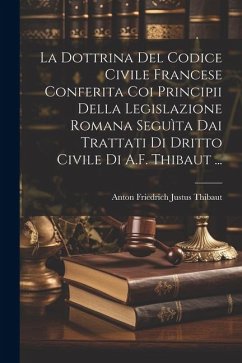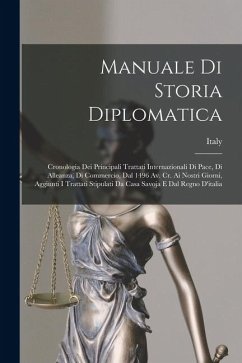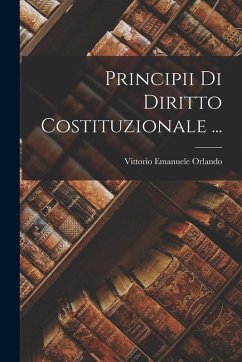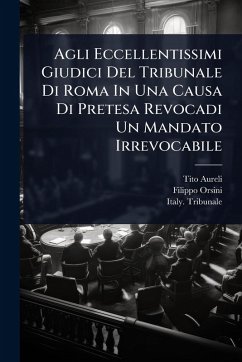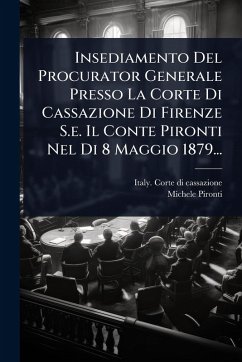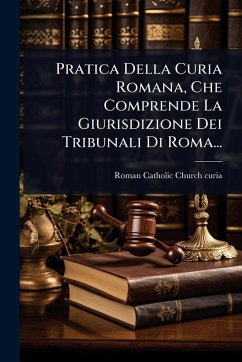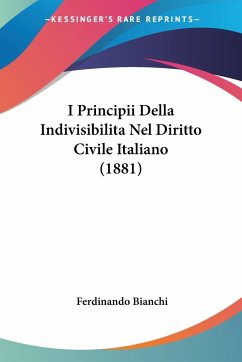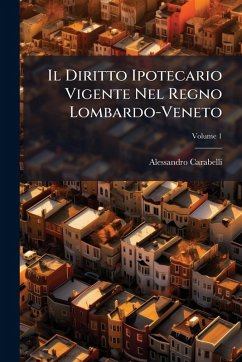
Trattati Della Dote E Dei Beni Parafernali O Sviluppamento Dei Principii Esposti Nel Capitolo III (Ii) Del Libro III Del Codice Civile Di Saverio Benoit ...

PAYBACK Punkte
14 °P sammeln!
"Trattati Della Dote E Dei Beni Parafernali" by Xavier Benoit offers a detailed exploration of dowry and paraphernal property laws as they existed in the mid-19th century. This new Italian version includes correspondences with the articles of the Civil Code for the Kingdom of the Two Sicilies, providing valuable insight into the legal framework governing marriage and property rights during that period. Benoit's exposition of the principles outlined in Chapter III (II) of Book III of the Civil Code makes this work an important resource for understanding the legal history of family law in Italy....
"Trattati Della Dote E Dei Beni Parafernali" by Xavier Benoit offers a detailed exploration of dowry and paraphernal property laws as they existed in the mid-19th century. This new Italian version includes correspondences with the articles of the Civil Code for the Kingdom of the Two Sicilies, providing valuable insight into the legal framework governing marriage and property rights during that period. Benoit's exposition of the principles outlined in Chapter III (II) of Book III of the Civil Code makes this work an important resource for understanding the legal history of family law in Italy. The book is a significant primary source for legal scholars and historians interested in the evolution of civil law and its impact on societal norms and economic practices related to marriage. This work has been selected by scholars as being culturally important, and is part of the knowledge base of civilization as we know it. This work was reproduced from the original artifact, and remains as true to the original work as possible. Therefore, you will see the original copyright references, library stamps (as most of these works have been housed in our most important libraries around the world), and other notations in the work. This work is in the public domain in the United States of America, and possibly other nations. Within the United States, you may freely copy and distribute this work, as no entity (individual or corporate) has a copyright on the body of the work. As a reproduction of a historical artifact, this work may contain missing or blurred pages, poor pictures, errant marks, etc. Scholars believe, and we concur, that this work is important enough to be preserved, reproduced, and made generally available to the public. We appreciate your support of the preservation process, and thank you for being an important part of keeping this knowledge alive and relevant.



